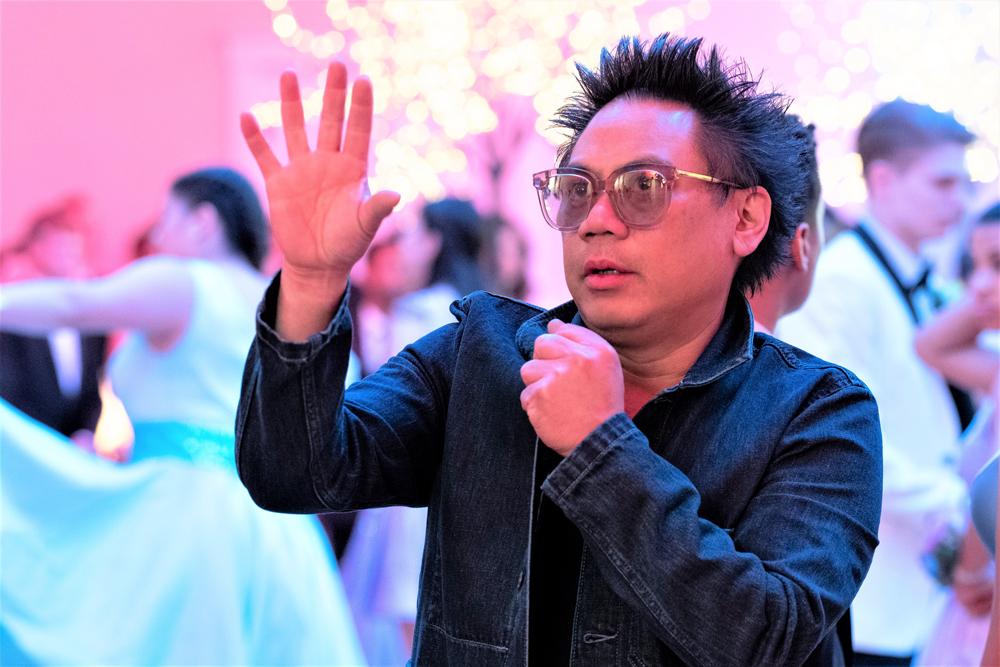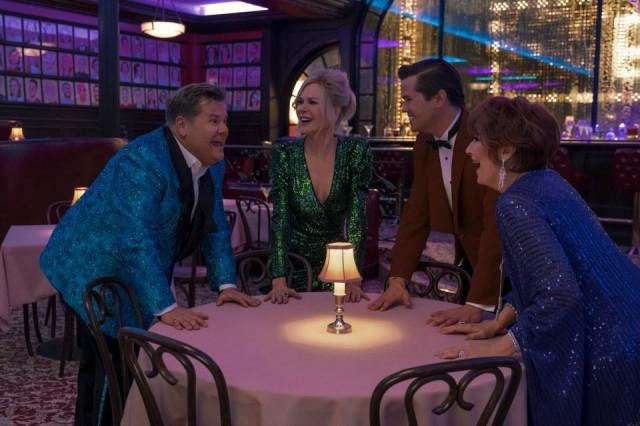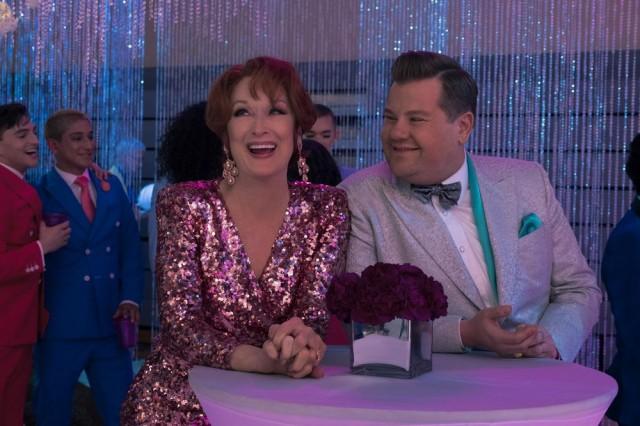Fil-Am cinematographer Matthew Libatique on working with Meryl Streep, Nicole Kidman, and James Corden in 'The Prom'

Los Angeles — “Every time I talk to you, I know I am doing well!” The humble and down-to-earth award-winning Filipino-American cinematographer told us a few years ago.
Back then, we spoke with him amid three film projects — the James Ponsoldt-helmed techno-thriller film “The Circle” starring Emma Watson and Tom Hanks, the psychological thriller of his schoolmate and friend Darren Aronofsky called “Mother!”, and the superhero film directed by Ruben Fleischer “Venom” starring Tom Hardy and Michelle Williams. It was a good year for Matty, as he is lovingly called in the industry, indeed.
It only became better when he was tapped by Bradley Cooper to do “A Star is Born” starring Bradley and Lady Gaga.
One of the things we love about “Matty” is his being so grounded. Despite the many awards he has won (Best Cinematography for “Pi,” “Requiem for a Dream,” “Black Swan,” “A Star is Born”), the 52-year-old Elmhurt, Queens native would even come over to our apartment in downtown Los Angeles for the interview.
This time, we were able to catch the busy cinematographer — now doing Olivia Wilde’s “Don’t Worry Darling” — to talk of his experience filming his latest musical comedy, “The Prom,” working with the likes of Meryl Streep, Nicole Kidman, James Corden and creator Ryan Murphy, what he misses about the Philippines and how he plans to celebrate Christmas during this lockdown and pandemic.
Below are excerpts of our conversation with him:
Congratulations on “The Prom.” You know, everybody wants to work with Ryan Murphy. How did you get this gig as a cinematographer for this musical comedy?
Ryan took a liking to “A Star Is Born” and I was prepping a film called “Akira” with Taika Waititi and then that film ended up going down.
On the day it went down, I got a call from my agent saying that Ryan Murphy wanted to meet with me. And Ryan, being familiar with his work, of course I'll take the meeting.
He took me out to lunch and he told me about “The Prom.” And the most important thing about the whole thing is that it just seemed so important to him. That's what really convinced me that I wanted to work with him. There's a genuine love for the content and the material that he had.

You did “A Star Is Born” and now “The Prom.” What are the challenges of filming musicals compared to other movies that you've done?
Well, those are both different. I mean, “A Star is Born" — the music, as much of it, is a part of the narrative. It's not like a musical.
That was the thing that was the most challenging part and the most exciting part really, about doing “The Prom.” I wasn't a fan of musicals before this. So it was like, how do you do this? How exactly do you make a musical movie? So that was what was exciting to me.
And the heavy lifting of preparing for this film was trying to figure out how that would be. But Ryan had a vision for getting into the film really quickly through a moving camera. And he makes very bold choices in everything he does.
So as a cinematographer, you just embrace that. You embrace somebody who wants to make bold choices and you embrace somebody who has a vision of how they want to move the camera. And then you just accommodate that. That's what my craft and skills are supposed to be able to accommodate.
What does it mean when the lighting here in “The Prom” is improvisational for you? Can you talk about that?
It's funny, doing interviews, people are throwing my words back in my face, but what it is, is that in modern times, we don't get the rehearsals that we used to get.
I used to hear stories about my friends who worked on “Dreamgirls” for example, and they were able to rehearse the number on stage, get the lighting cues just right. I never get that. So when I say it's improvisational, it's about being able to react to the first time that I see the performance happen on the actual set.
And then I have to work really quickly to make sure the lighting is doing the right things, accommodating the actors, and also transitioning from a visual standpoint in the grand scheme of things from one place in the narrative to another.
The best example of that is the very finale of "The Prom" where it starts off with just Emma and Alyssa and then it graduates to the celebration. But there's a lot of beats in between those two moments that are lighting cues that have to be created on the day.
So that's kind of what I mean by improvisational lighting. It's just, I have to react to the tone and performance and be sensitive to it.
You filmed a lot in Los Angeles, including the Northridge Mall. Were there a lot of people walking there, shopping, or you just closed the whole mall?
I never want to shoot in a mall again. There's nothing less cinematic than a mall, but what's great about it as I look back on that scene, is that it is a scene that was more for our movie, in the reality of our movie — it was more Indiana than Broadway.
And it was able to take the same energy from a musical performance and the amazing choreography from Casey Nicholaw. It was amazing to just be able to see that all happen in such a banal location like a mall.
The thing starts in a food court on the second floor, ends up on an escalator and then ends up inside a fountain. And when I say that, it sounds ridiculous, but that's the scene.
And it was a challenge because we had to keep pushing people out of the way, because it was an open mall and it was November. And we're using the light from a skylight in the center of the mall to light the scene for the most part. So there's some technical challenges there just to be able to get everything we had to get.
But what's nice about choreography and dance, and what I learned is, I learned this also in “Black Swan,” it's not hard for the dancers to accommodate the camera because they work so fast.
Ideas as I watch choreography happen, I watch Casey work and I watched the dancers work, and I watch Ryan make a suggestion about it in a rehearsal they're able to switch on like a dime. They're able to react so fast. And it was a great lesson for me in my career. And that's kind of how I go about my job is I have to be able to react that way too.
How was it working with Meryl Streep, Nicole Kidman and James Corden in this film?
Oh, it was like a dream come true. I think if I had made this film 10 years earlier, I probably wouldn't have enjoyed it as much as I did in this occasion because I'm at a point now, where I could let go of some of the things that my responsibilities dictate and actually enjoy where I am. And then watch everything happen with a front row seat and see these performers, the brilliance and the subtleties, the larger movements and the smaller ones. That you can watch a person like Meryl Streep perform, it's beyond film school. Let's put it that way.
It's watching art being created at its very origin. And James Corden as well is an immensely talented man and Nicole is just every bit the movie star you would expect her to be. And she's just like phenomenal, again.
All of them, Andrew Rannells too, Keegan-Michael Key, Kerry Washington, Ariana DeBoser, Jo Ellen Pellman, all of them. They just have such control of their instruments, that it was like watching music being played to me.

You mentioned about the filming being stopped also in March, because of the COVID. What were the challenges of filming following safety protocols?
Fear, really. Coming back to work and finishing the movie, there was a lot of fear. Maybe not fear in a scary sense as much as just the anxiety about not knowing what this thing was. And the same reason we shut down and I felt good about them making the decision to shut down because we just didn't know enough about what was happening.
And even when we started shooting again, I still didn't know enough about what was happening. And it is an immense, immense distraction to wear a mask and a face shield and continuing to wash your hands and not eat lunch and be in zones where you can't see certain people and still try to be a creative person. It's not easy.
But filmmaking perseveres in many ways. And I think that what it did, the shutdown provided us really was an opportunity to evaluate the movie. It gave Ryan a chance to evaluate the movie so we could attack the things that we owed at the finish in the right way. So there's always a silver lining. We're not out of this yet, there's a somber tone to my voice because of it.
I know with the lockdown there's no traveling, but when was the last time you went to the Philippines and when do you plan to go back?
I plan to go back as soon as I can after this, once we defeat COVID. When we crush that thing into the ground, then that's when I plan to go back.
But I was there, what, 2016? Maybe 2017. I was doing a masterclass with many, many of the cinematographers.
And I actually joined the LPS (Lupon ng Pilipinong Sinematorapo, a group of cinematographers in the Philippines). I'm an associate member or honorary associate, I don't know what exactly my official title is, but yeah, I'm part of that cinematography society in the Philippines. The LPS. So I'm proud of that. And I'm proud of, at that last trip to the Philippines, to have met all of those people. And I just wish them all well.
_2020_12_20_16_49_06.jpg)
What do you miss most about the Philippines?
The food.
Lechon?
No, I'm more Sinigang.
And you're a good chef yourself?
I can make those two things. Arroz caldo as well. I can make all those foods to satisfy myself, but when my mother makes them, it's a lot better.
Christmas is just around the corner. How are you planning to celebrate with this lockdown?
It doesn't feel very celebratory to me, but having my mother on Zoom maybe, and having my kids. Making one Filipino dish, I haven't decided which that would be. And then just trying to relax really. I'm in the middle of a film right now. So, it's just time off for me. Pasko (Christmas) is different this year.
Thank you very much, Matty, for your time and hope to see you in person next time.
Yeah. It's nice to see you.
— LA, GMA News




